From September 4th – 9th 2012, in the Ginza district of Tokyo, a mecca for Japanese fine arts, young calligraphers (in their twenties and thirties) possessing a deep passion for calligraphy were the focus of an exhibition titled “A Small Exhibition for Young Calligraphers.”
The exhibition was held with the hope of nurturing a younger generation of calligraphers in the tradition of Wang Xizhi (王羲之) and Kukai (空海). According to a representative from LiNCS Corporation, sponsor of the exhibition, planning began seven years ago. Each year from now on, young calligraphers will continue to be sponsored through this incredible exhibition.
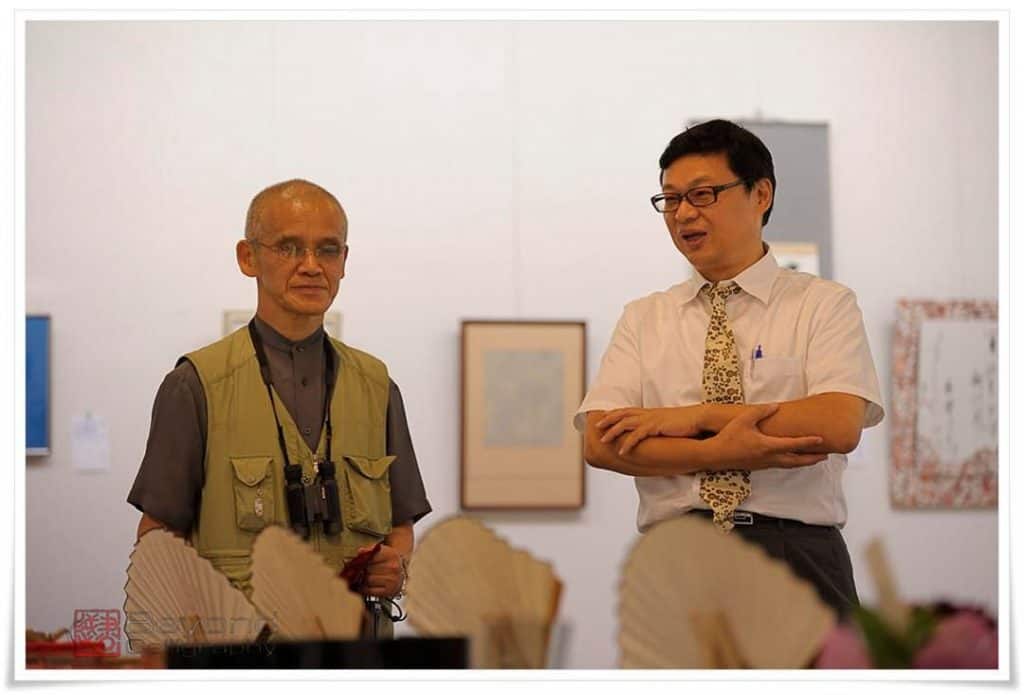
According to LiNCS executive Sakumura Seiichi, “The hope of ‘A Small Exhibition’ was to create a situation in which young calligraphers could begin to be nurtured and given the opportunity to flourish. Although every newspaper company in Japan sponsors exhibitions and has awarded prizes to artists, LiNCS, after last year’s exhibition, began various efforts to develop charitable events in support of the area in Northeast Japan that was affected by the devastating earthquake and tsunami on March 11th 2011. Exhibiting works that are in competition with young artists from other artistic genres, facilitating the buying and selling of works, accepting requests to create characters similar to logos or titles for commercial purposes, through all of these methods we hope to create a nurturing environment to support a younger generation of artists.”
In this exhibition, approximately 60 ambitious works by artists majoring in calligraphy at various Tokyo universities, including Daito Bunka University, Tokyo Gakugei University, and Nishogakusha University, were displayed. The youth and individuality of the various participants was fascinating to behold.

An area where an alliance of single-person exhibits could be displayed was created by three individuals: Heizo (Kanji), Matsuo Sekiho (Seal engraving, calligraphic paintings and writing), and Kitayama Naotaka (Kanji, kanji mixed with kana). With each of their three personalities on display, it was indeed something worth seeing.
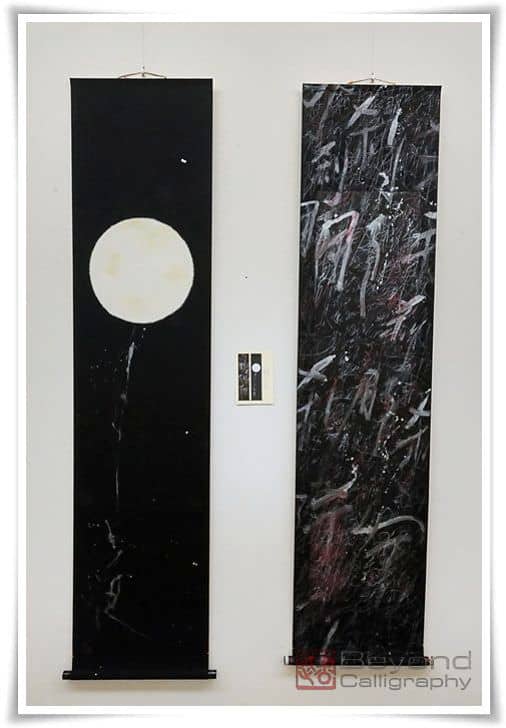
Pictured are works with the mounting borders removed. Characters are written directly upon the surface of the cloth.
 | 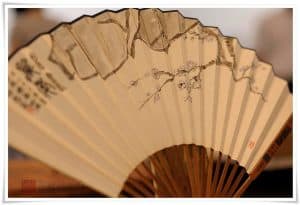 |
Pictured is an area where one’s presence can be felt, with seventeen seals and the fronts of four folding fans.
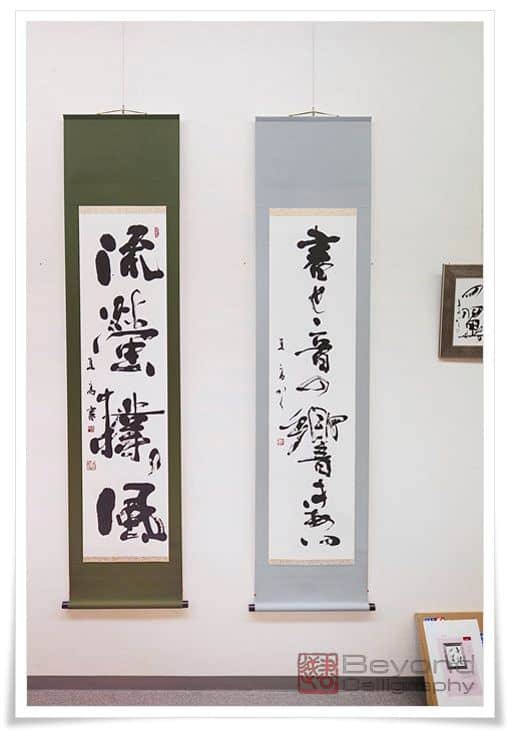
Here one can notice the use of the soft tip of a long brush, dark ink, and the presentation of an attractive line.
Lined up on the wall, other than the single-artist area’s works, were also works that were unique and absolutely impactful in their own way. Although not everything can be introduced here, I would like to introduce one part.

Through his work in designing Fukushima, here is an artist who was interested in the character “fu.” A fascinating, as well as difficult, question: How are the four marks of “fu” assembled and written?
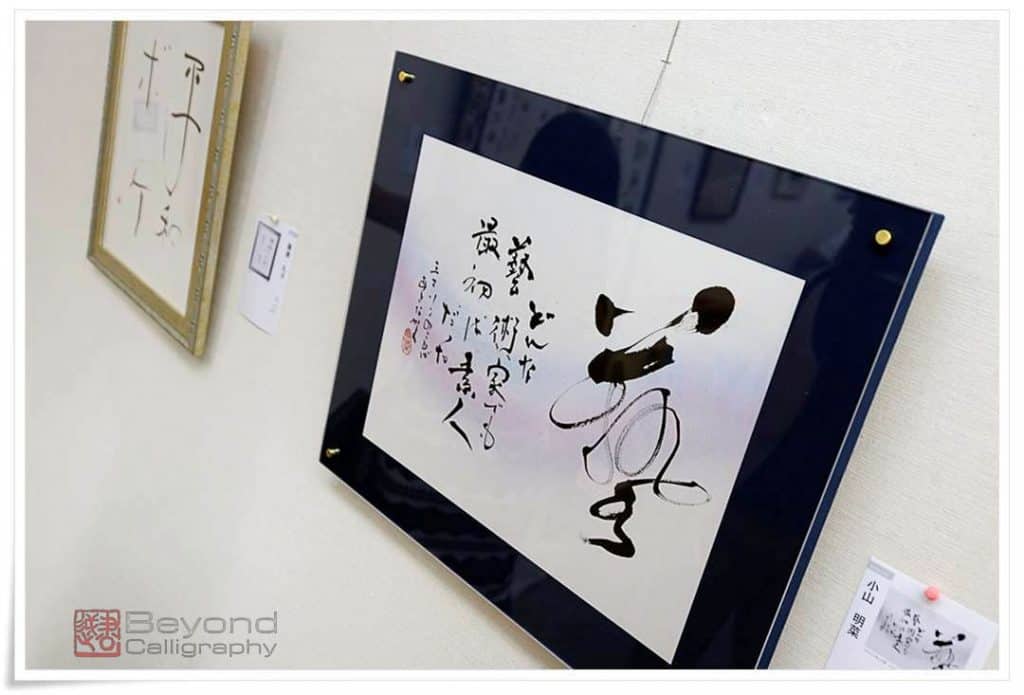
All artists, no matter the kind, are novices in the beginning. The desire to persevere in their commitment to calligraphy is reflected in their work.
 |  |
Photo 9-10. Nakajima Reijyu, “Wind of Today” |
|
With the use of a soft brush, here is a work that clearly conveys images from a song.
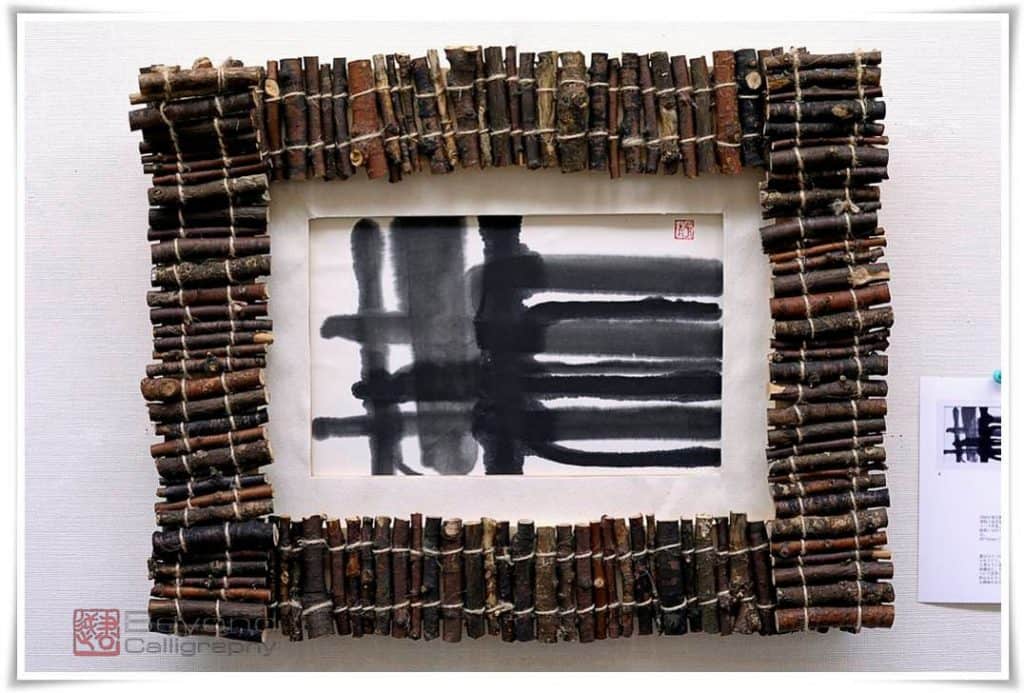
Created by a College of Arts graduate, this work captivates the viewer through its use of materials acquired from nature, including a handmade frame.

“The wind rippling from a happy (imaginary) bird. According to the calligrapher, this work is represented by a focus on the interior calligraphic marks.

In this work, a dried squid is displayed before one’s eyes. This work’s use of color was favorably received.
What do you think? Next time, I would like to feature an interview with two exhibition participants who are seal engravers. Don’t miss it!
* Steven Anderson is a recent psychology and Japanese language studies graduate who lives and works in New York City. He is passionate about Japan and psychology and hopes to live in Japan in the near future before eventually completing graduate studies in topics related to mental health and East Asia.
